What would autumn be in the northeast, without the blaze of sugar maples in our forests and gardens?
In Ontario such a thought is inconceivable, but they’re just one species of many whose foliage turns salmon, orange, apricot, peach or bronze, once chlorophyll disappears in autumn and exposes the secondary pigments, whose role it is to harvest sunlight to feed the plant. Now that I’ve escorted you through the red part of the hardy autumn trees & shrubs in my last blog, let’s have a look at some species that turn those spectacular orange shades. Sugar maples (Acer saccharum), of course, are so predominant in northeast North America, they seem like the iconic poster child for colour change. Rarely, however, do they turn a solid orange like the tree below…..
Instead, their leaves transform to yellow, orange and scarlet according to conditions of sun and shade, and also according to how much sugar has been metabolized to bring on the synthesis of anthocyanins seen in the colour change of many red maples (Acer rubrum).
A few of the Asian maples take on orange hues as well. Just outside my own Toronto living room window is my nearest and dearest connection with orange autumn foliage – a common Japanese maple (Acer palmatum) that has now been with me long enough for its branches to caress the 2nd floor guest room windows (much to my window-washer’s dismay), and to offer, absolutely free, the most beautiful fall colour show each October or early November. This lovely tree has been growing against my old house’s front wall for more than 25 years, and is protected from fierce north winds while enjoying the warmth of the sun from the south. That’s not to say it’s entirely happy; it always loses a few young boughs in an unusually cold winter, and freezing rain after a heavy snow has sheared off a big limb. But it’s this autumn transformation that makes it such a treat, with colours ranging from deep scarlet to the softest apricot.
From inside the living room, it’s like looking through a tracery of amber lace, which is why I’ve never wanted drapery or blinds on my windows and instead decided on a fringe of blown-glass witches’ balls to catch and refract the sunlight.
There is nothing more beautiful than those delicate leaves – the subject of so many fine Japanese woodblock prints over the centuries.
Another beauty from Asia – this time from central China – is the elegant paperbark maple (Acer griseum) with its glossy, peeling, copper-toned bark, and its wonderful deep orange-scarlet autumn colour. I grow this species in my own garden, but this beautiful specimen is in Toronto’s Mount Pleasant Cemetery. It is simply one of the best trees for a small garden and, if possible, should be placed where its lovely bark can be seen in winter.
There’s another little Asian maple that is rather rare in gardens in North America, but seems perfectly hardy and should be used more: ivy-leaved maple or vine-leafed maple (Acer cissifolium). Multi-stemmed and used as a small tree or large shrub, it’s especially beautiful in October when its foliage turns a gold-suffused-apricot.
Then there is three-flower maple (Acer triflorum), yet another small, fine Asian maple that takes on soft orange-yellow tones in fall. I am so fortunate to have these rarer maples in Mount Pleasant Cemetery.
From Korea comes a lovely shrub with waxy, fragrant, white spring flowers called Korean abelia (Abelia mosanensis). In autumn, the foliage turns a rich salmon-orange.
Many Japanese cherries turn colour in autumn. Sargent’s cherry (Prunus sargentii) often turns a spectacular mix of deep salmon and dusky rose-pink….
…while the hardy Japanese cherry hybrid ‘Accolade’, below (one of whose parents is Prunus sargentii), usually develops a good peachy-orange colour.
Even the hardiest and most common of the Japanese cherries, Prunus serrulata ‘Kanzan’ – shown here in Toronto’s Mount Pleasant Cemetery – puts on a pretty, soft-apricot show each autumn.
What else comes from Asia and turns orange in fall? Korean mountain ash (Sorbus alnifolia), also called the alder-leafed whitebeam, is a small, hardy, underused tree with small red fruit and apricot-orange leaves.
European mountain ash (Sorbus aucuparia) also puts on a good orange show in fall, both the leaves and the fruit clusters (until the birds finish with them).
What about oaks? Though there is great variability in the colour of senescing fall leaves, a number of hardy oaks pass through spectacular shades of orange and copper. Perhaps the most dependable is pin oak (Quercus palustris), with its finely-cut, narrow leaves. To see this tree on a sunny October day is to celebrate the joys of autumn. Coupled with that, pin oak is fast-growing, easy to cultivate and pollution-tolerant.
Red oak (Quercus rubra) is a majestic tree that will infuse the forest canopy with honey-gold and russet-orange, sometimes with wine-red highlights. Indeed, all these colours can sometimes be found on a single red oak bough in autumn.
We scarcely need to look outside our native flora for oaks to use in our gardens, but there’s one half-native-half-exotic hybrid pyramidal oak that’s perfectly suited for very small gardens, given its narrow, columnar bearing. It’s the Crimson Spire™ oak, (Quercus x bimundorum), a hybrid of English oak and white oak, which gives beautiful russet-orange autumn colour.
Besides oaks, beeches are the quintessential stately autumn tree for bronze-gold-orange fall colour. That holds true for our native American beech (Fagus grandifolia), below, alas currently experiencing the deadly ravages of beech bark disease in my area…
…. or the European beech (Fagus sylvatica) and its various cultivars and forms, including copper beech. I particularly love the fernleaf beech (F. sylvatica ‘Asplenifolia’), below, one of the most graceful of trees, with soft apricot fall color;
And there are a few rare Asian beeches, like Fagus orientalis,below, with its rich fall colour.
Another beautiful, large tree is the Japanese zelkova (Zelkova serrata), which always turns colour in autumn, though it can be red, soft orange, as below, or yellow, depending on the tree and the exposure.
Not all ash trees exhibit colour change in fall, but white ash (Fraxinus americana), below, can often be counted on to make a beautiful show. (Sadly, the emerald ash borer is wreaking devastation on this genus in my part of North America and no one will be planting ashes for a long time.)
What about a conifer that turns orange in autumn before shedding its needles? There are two, actually, but since bald cypress isn’t everyone’s cup of tea, let’s give a cheer for the lovely dawn redwood (Metasequoia glyptostroboides).
A small and rather rare tree that often inspires a curious double-take in autumn is the pillar crabapple or Chonosuki crabapple (Malus tschonoskii). Its fall hues are much more vibrant than most crabapples, a gorgeous mix of gold, apricot and salmon, on a tidy tree that should be grown much more often.
From the forests of eastern North America come two smallish trees that turn apricot-gold in October. Both are members of the large birch (Betulaceae) family and much-loved for their hard wood – a trait commemorated in their respective, and confusingly similar, common names. Let’s start with American hophornbeam or ironwood (Ostrya virginiana). an understory component of forests from Nova Scotia to Texas. That genus name comes from the Greek word ostrua for “bone-like”, which gives a clue as to its hardness; traditional uses have included tool handles and fence posts.
The second small North American native is Carpinus caroliniana, also known by the similar common names of American hornbeam, ironwood, musclewood and blue-beech. I really love this tree, and if I were starting my garden from scratch, I’d make sure it included one. Look at the beautiful honeyed-apricot fall colour below….
I cannot talk about orange fall colour without mentioning smoke bush (Cotinus coggygria). Some autumns, the leaves of this large, multi-stemmed shrub are almost a neon orange and are especially thrilling when backlit by the sun. This is the wine-leafed cultivar ‘Purpureus’ – note the little wisp of left-over “smoke”.
I mentioned fothergillas in my blog on red fall colour, but in fact they can also be among the best orange-leafed shrubs in autumn; it just depends on the season. And often, all colors are present in the shrub. In fact, I can promise you that if you plant one, you will be delighted with its foliage change in fall. Here is Fothergilla gardenii at the Toronto Botanical Garden.
Taking a page from its red-hued cousin, the burning bush, the common European spindle-tree (Euonymus europaeus) has excellent salmon-coral fall colour when grown in sufficient sun. The one below has decided to re-flower in autumn (something that happens in many plant families, given a long summer and enough time for a few of the current year’s growing buds to mature within a single season, rather than waiting for the following spring).
And though I’ve mentioned the ‘Rosy Glow’ Japanese barberry in my discussion of red fall colour, common barberry (Berberis vulgaris) – despite its bad reputation for invasiveness and alternate-hosting of disease – is no slouch in the autumn fireworks department.
When I was designing gardens in the 1990s, I would often include Peking cotoneaster (C. acutifolius), a serviceable shrub for hedging or screening that was off the radar of most gardeners, but one I appreciated for its ease of cultivation in any soil and its beautiful mottled autumn leaf colour.
Many spireas take on soft peach-apricot-gold tones in fall. Given their ubiquity –especially Van Houtte spirea (Spiraea x vanhouttei) hedges, below — it’s a good thing that they have something to offer long after their spring flowers fade.
I have a soft spot for my final shrub, given that it grows in my back garden and its fall colour change is part of a dramatic duet with a stunning neighbouring perennial – a “twofer” (well threefer, if you count the white fall snakeroot, Actaea simplex) that extends the season well into November.
Not that Tiger Eyes™ sumac (Rhus typhina ‘Bailtiger’) doesn’t hold its own through spring and summer: no, those ferny, chartreuse leaves add a luminous pool of light to a shady corner in my garden for months on end. But in October, when the autumn monkshood (Aconitum carmichaelii ‘Arendsii’) finally opens those cobalt-blue flowers atop tall, thick stems just in time for the sumac to transform itself into a lacy, apricot confection, it is simply my favourite moment in the garden.
My final plant for orange fall colour is a perennial grass, little bluestem (Schizachyrium scoparium), below. In October, this wonderful, warm-season grass takes on soft-orange hues that speak of autumn on the prairie. And like all fall colour change, it signals a stirring last hurrah in the growing season, a time for cheering before the frosts of November subdue the garden palette and the snows of December finally subsume it. Until next year.

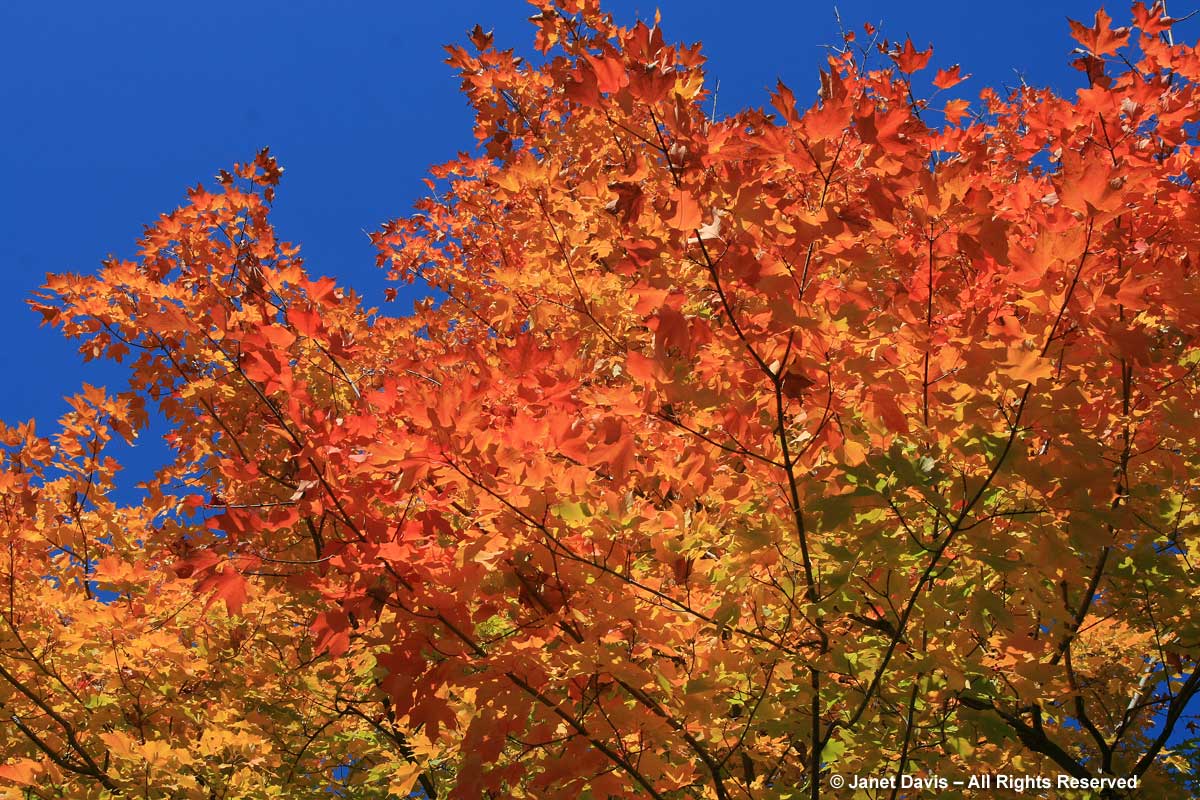
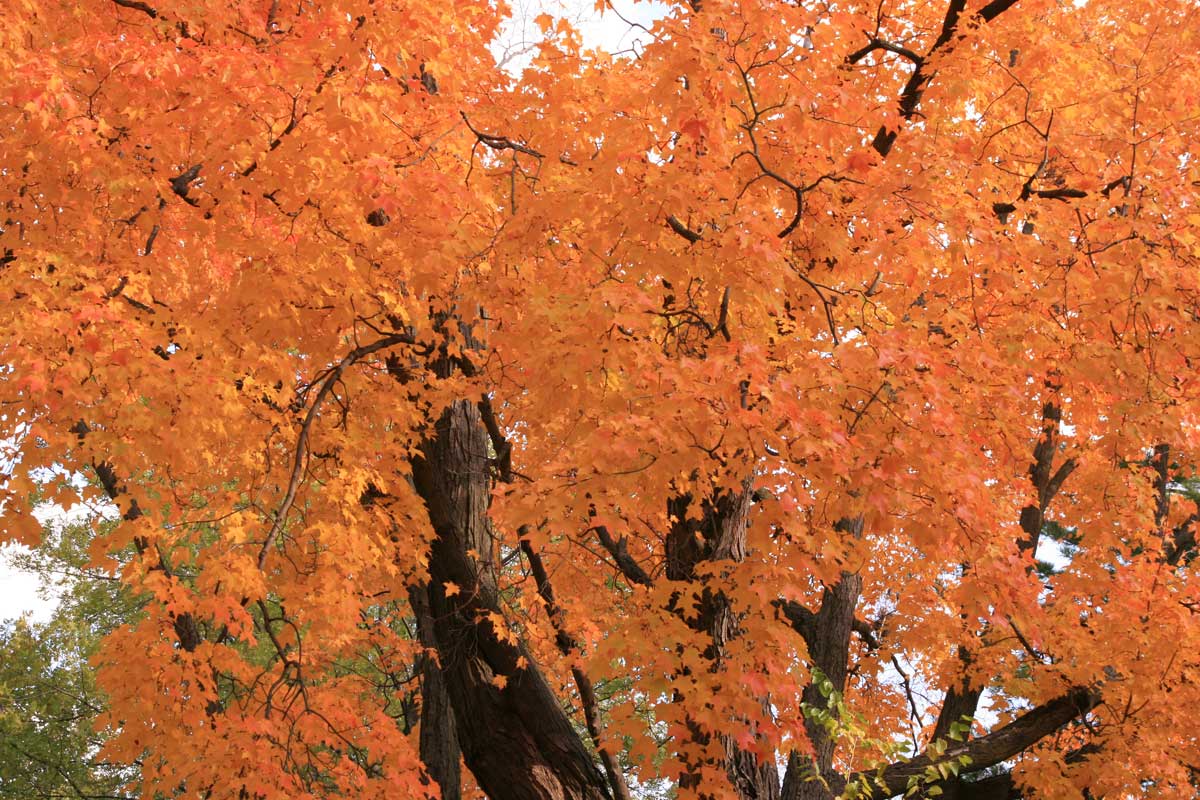
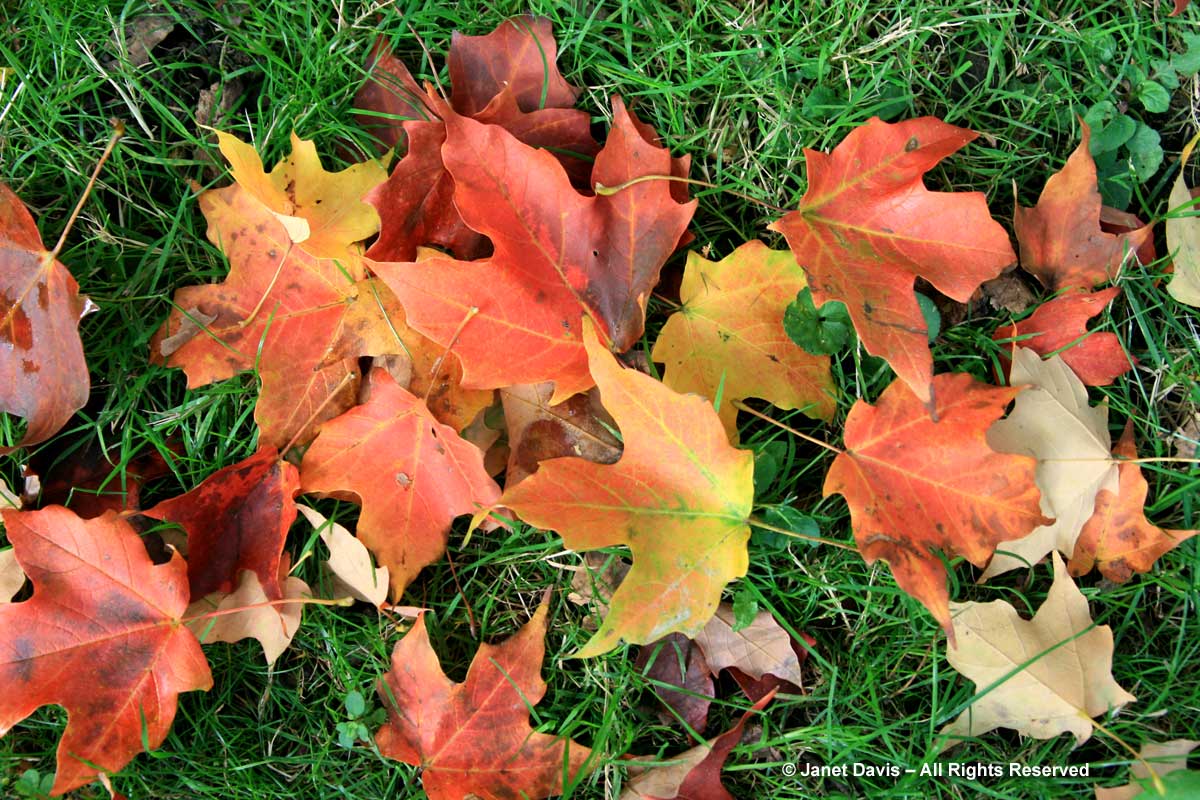

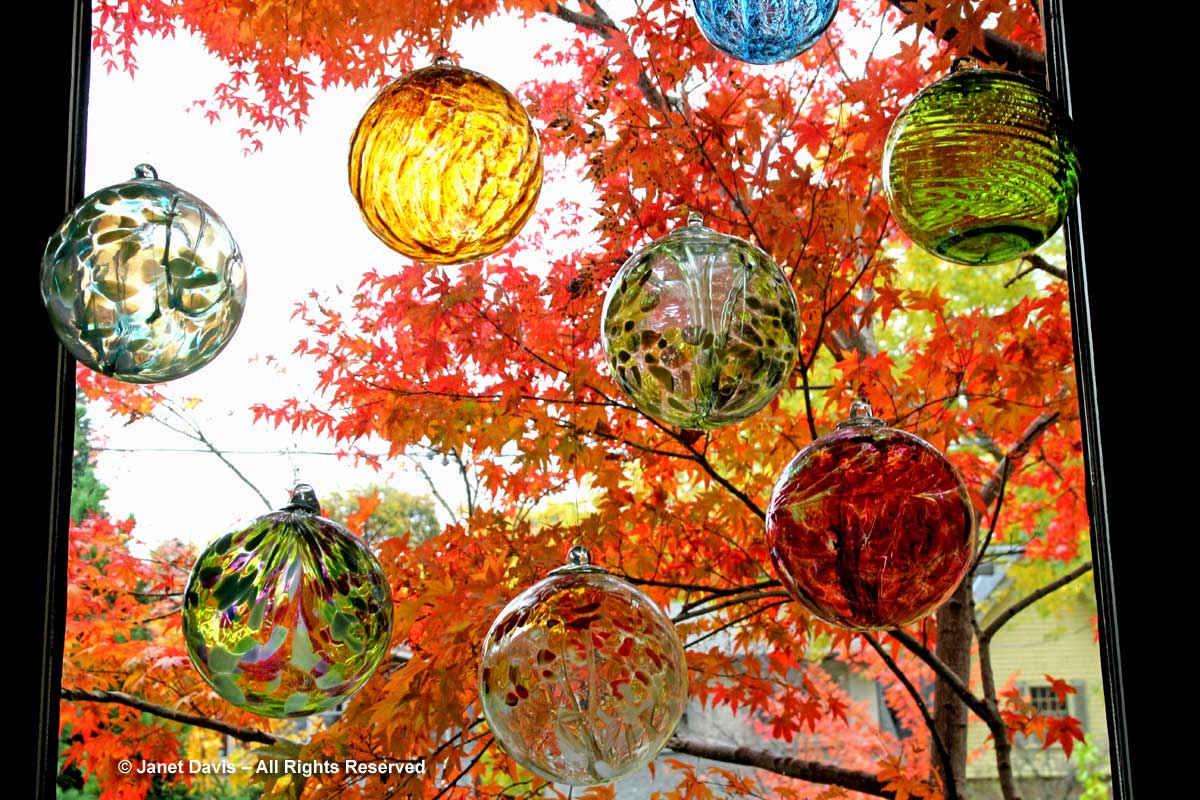

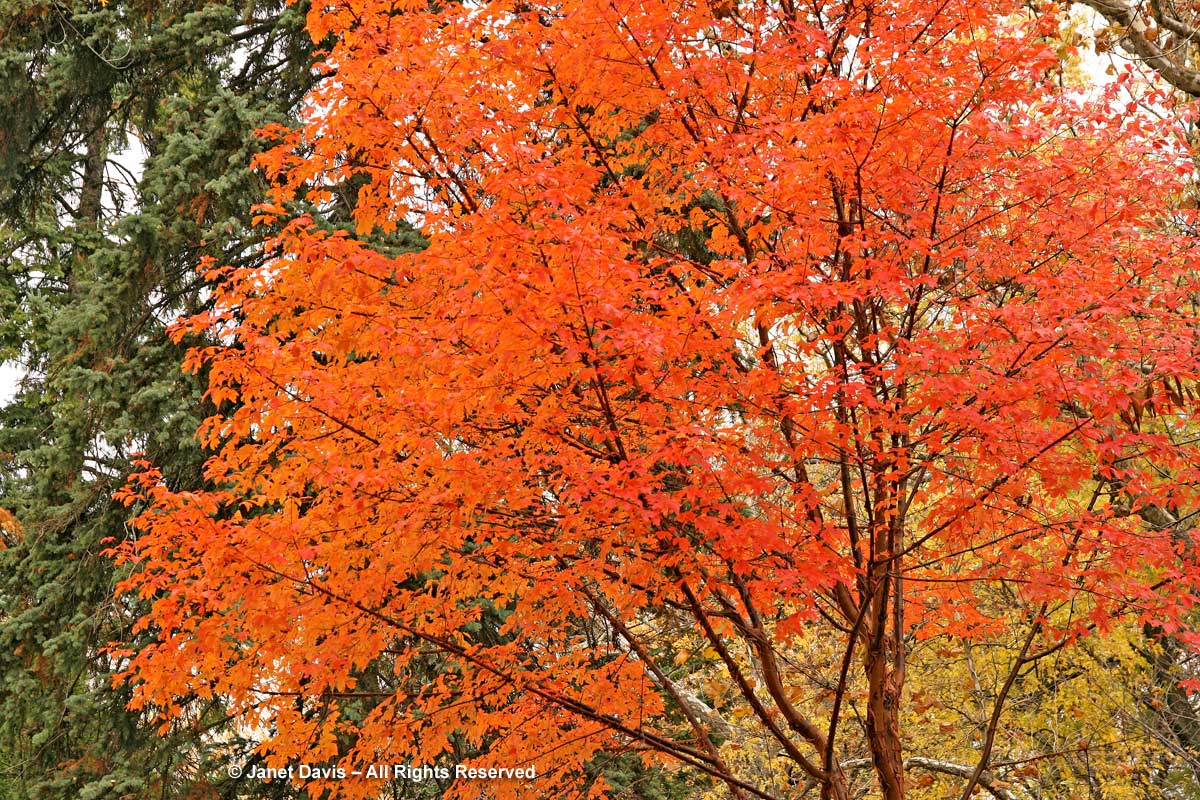


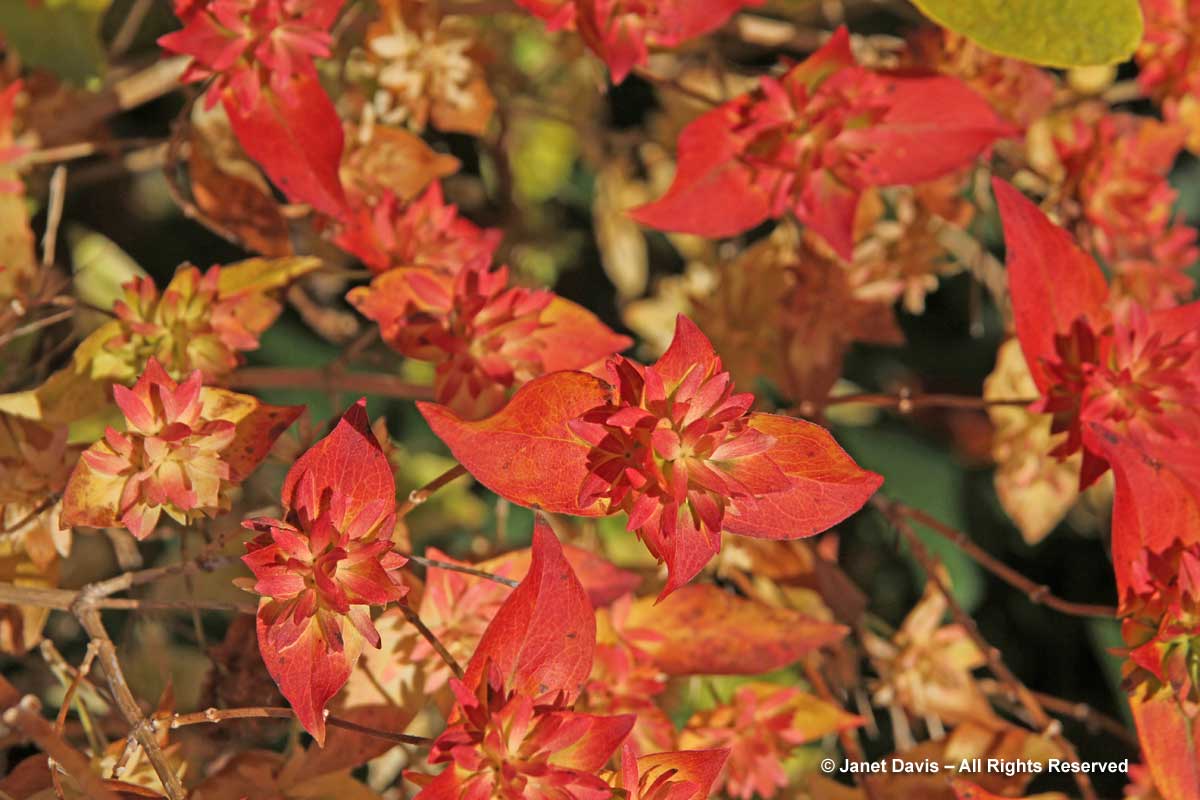
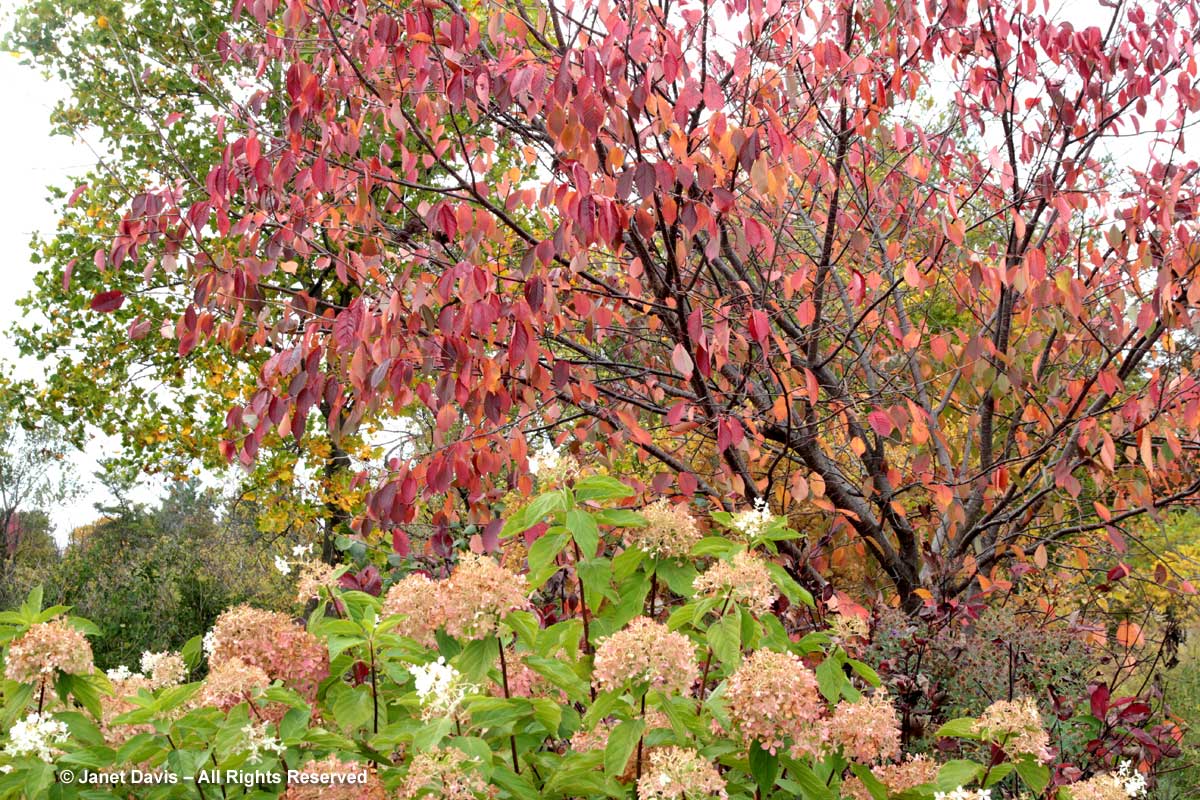

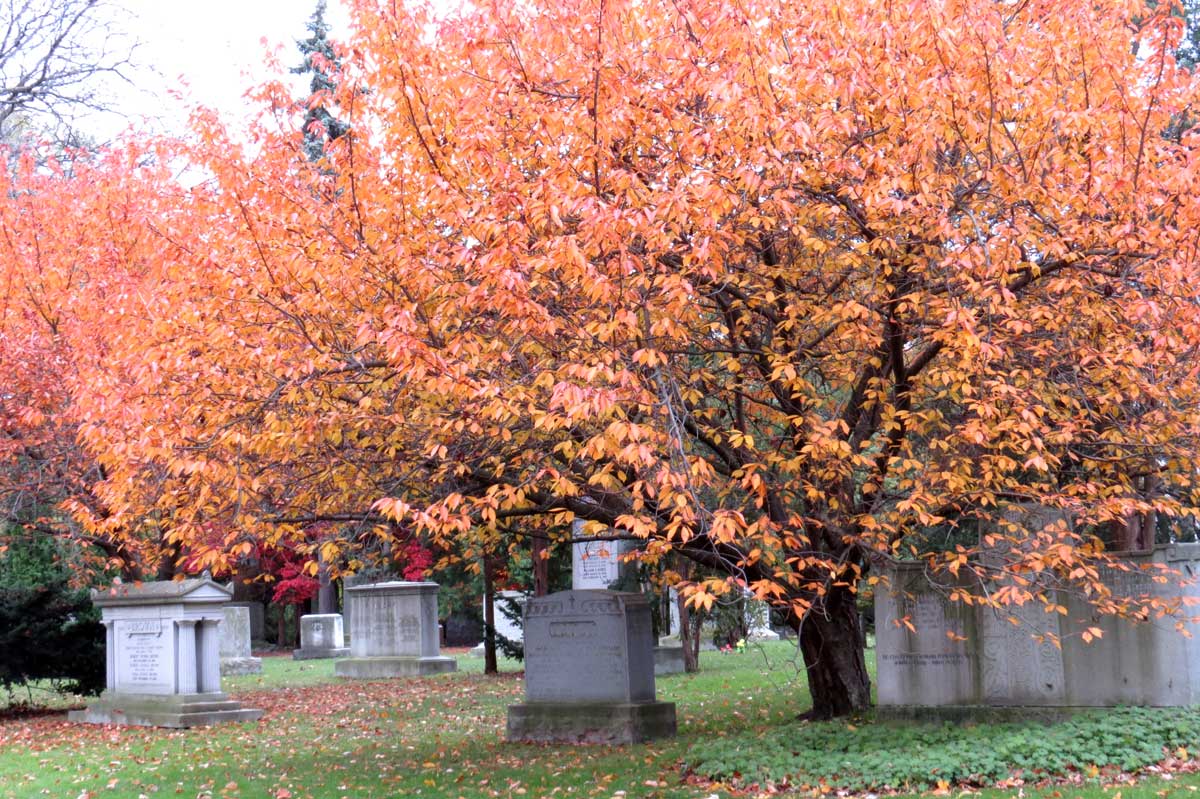


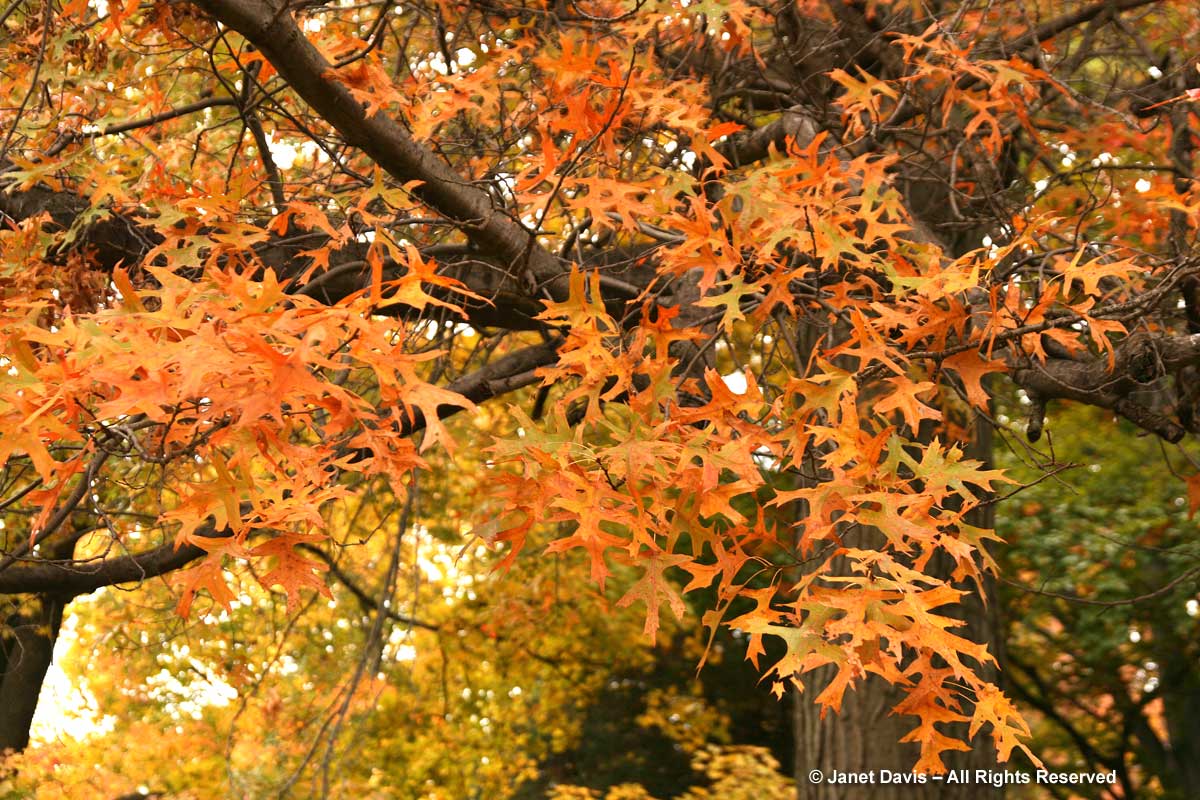

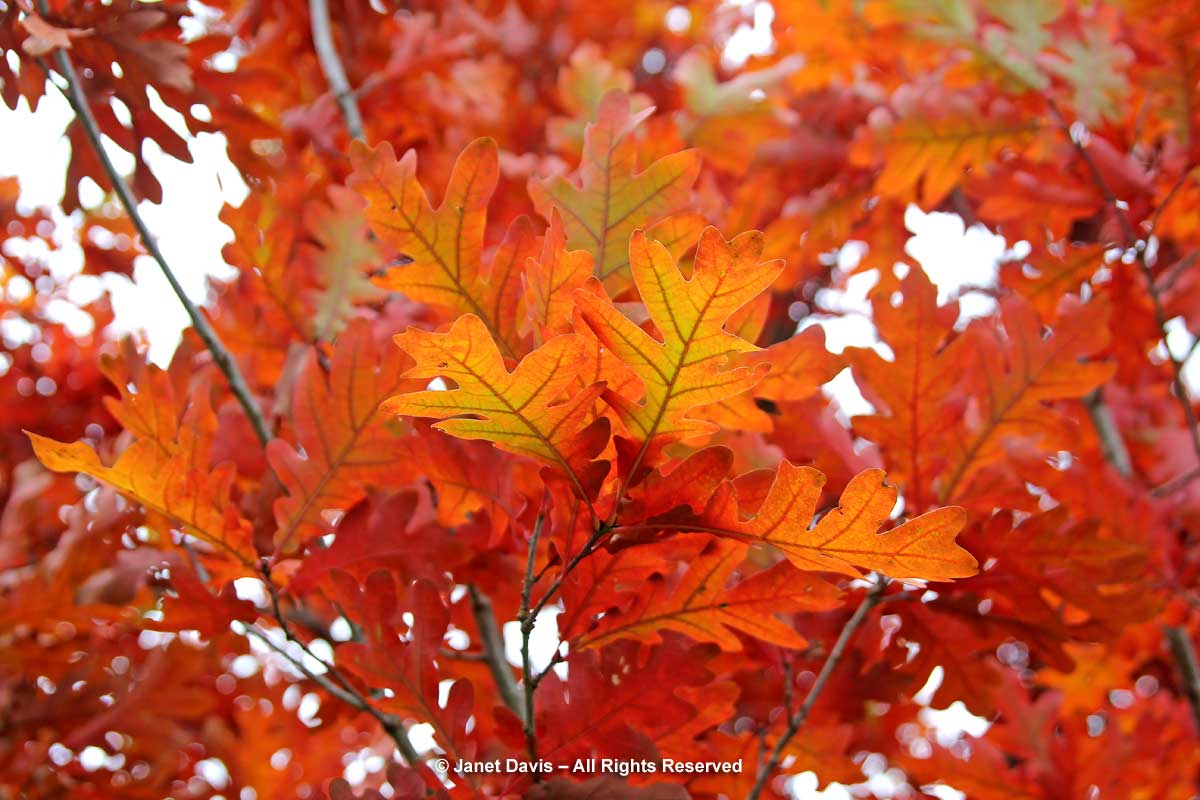
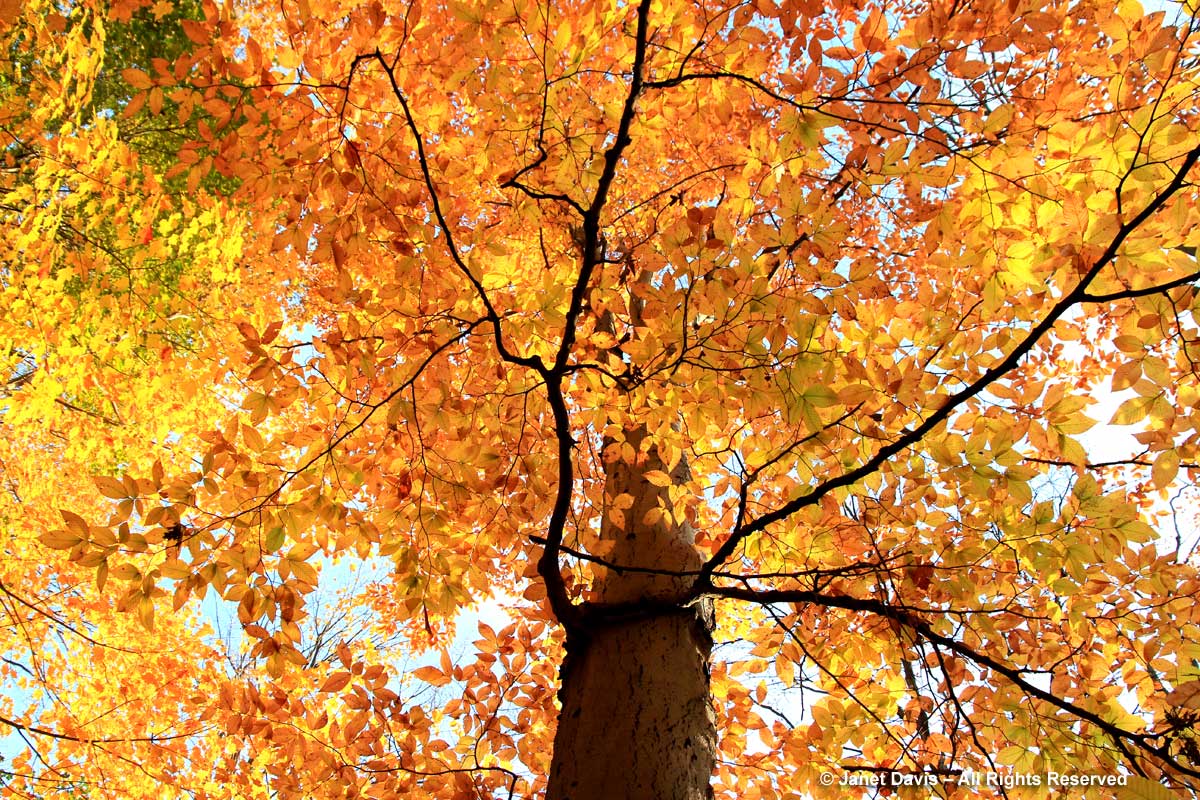

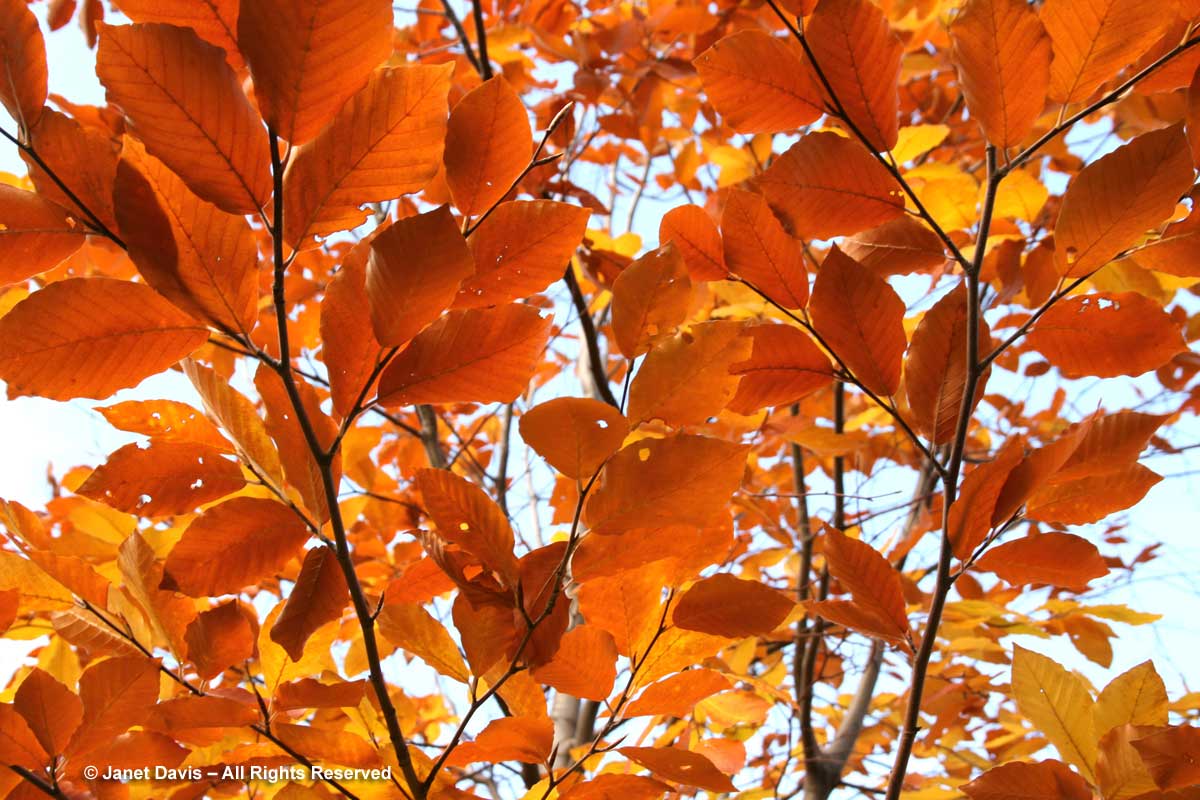

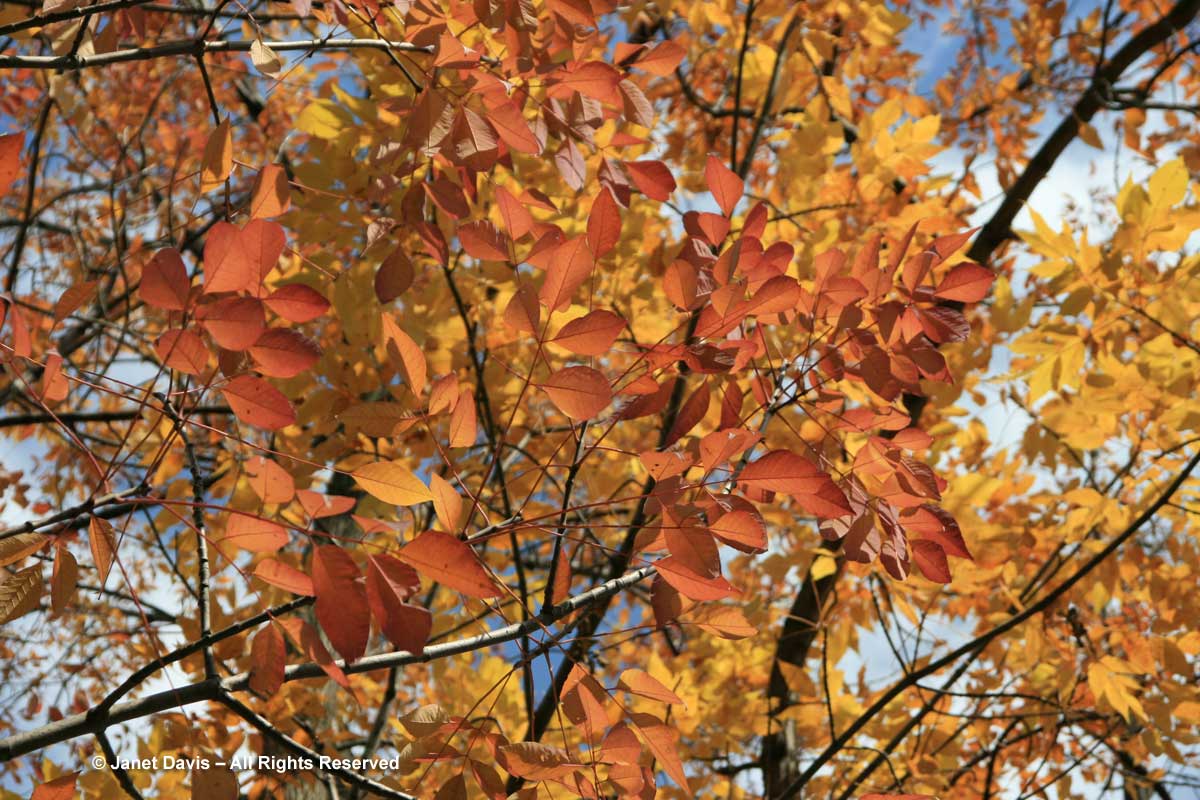


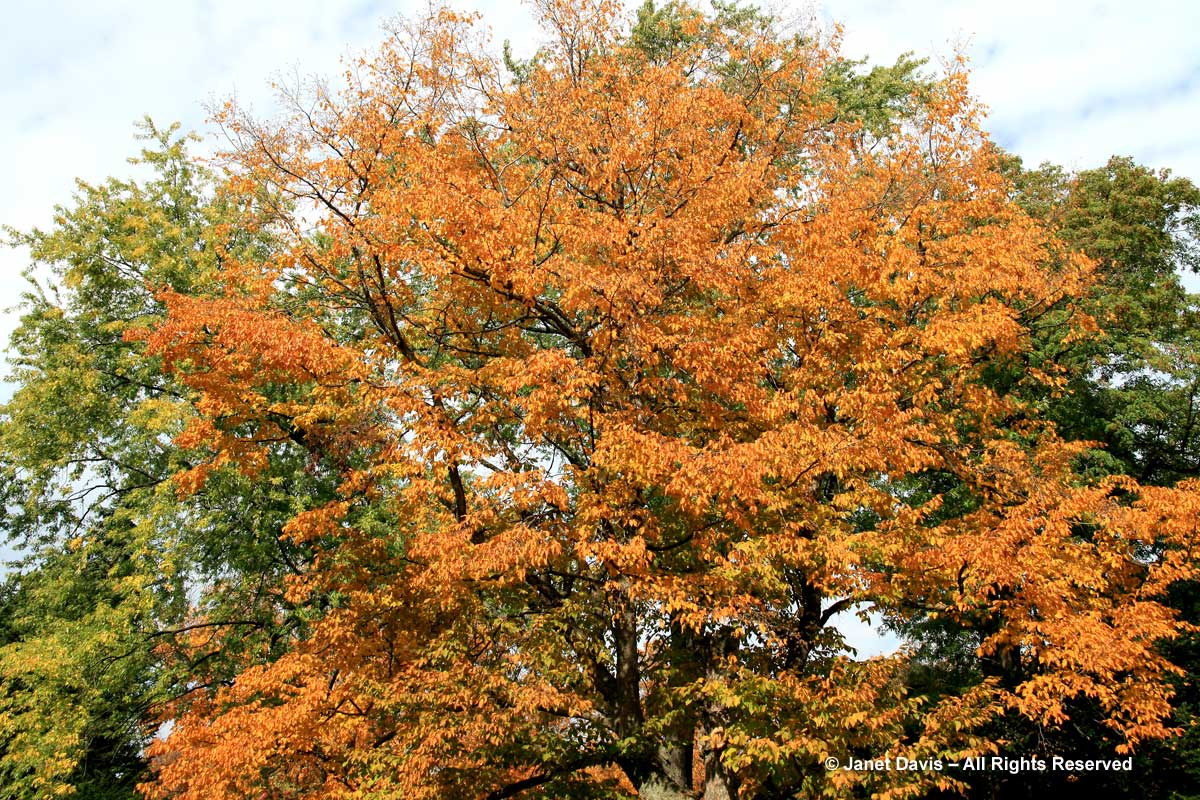
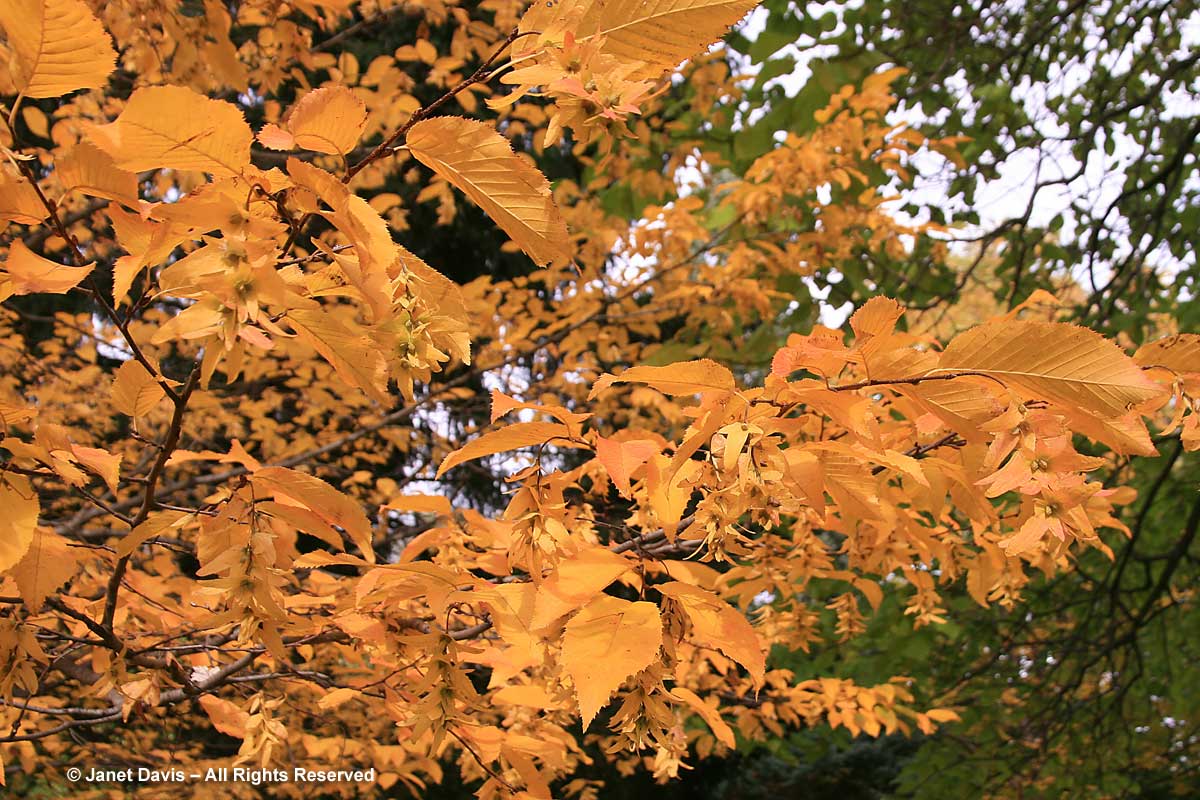
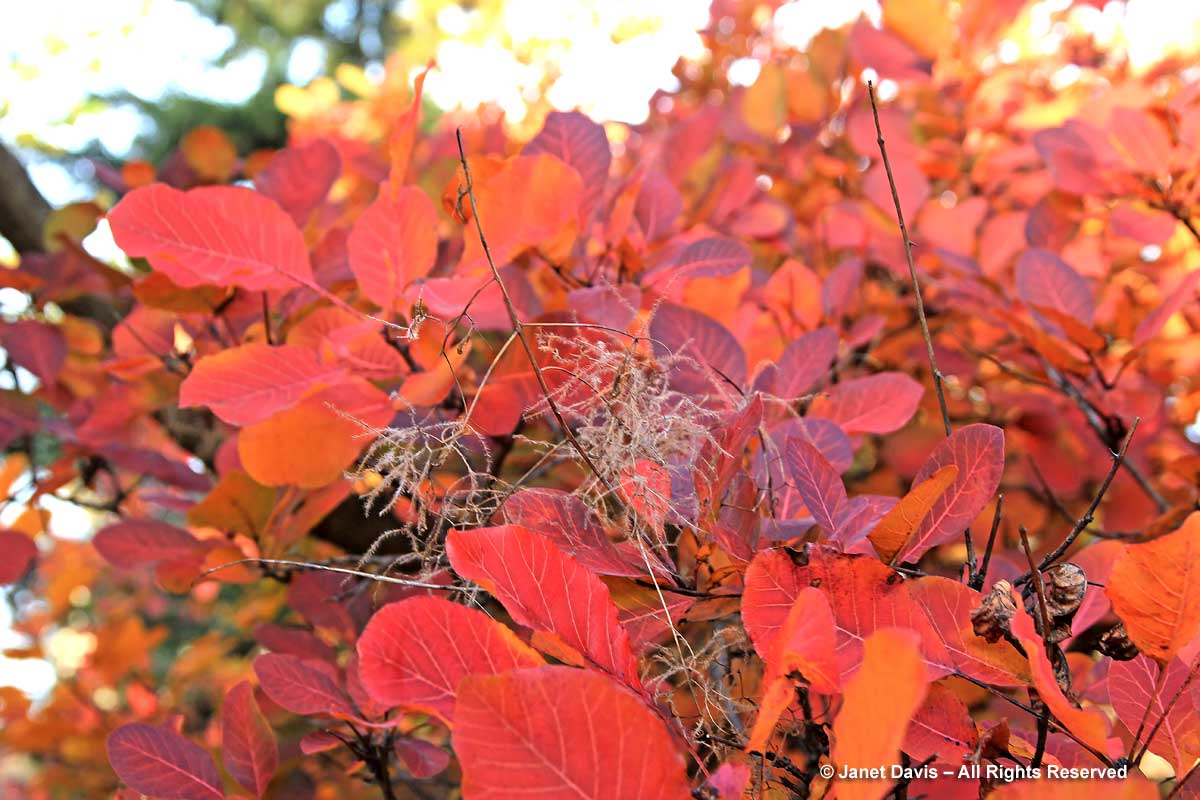
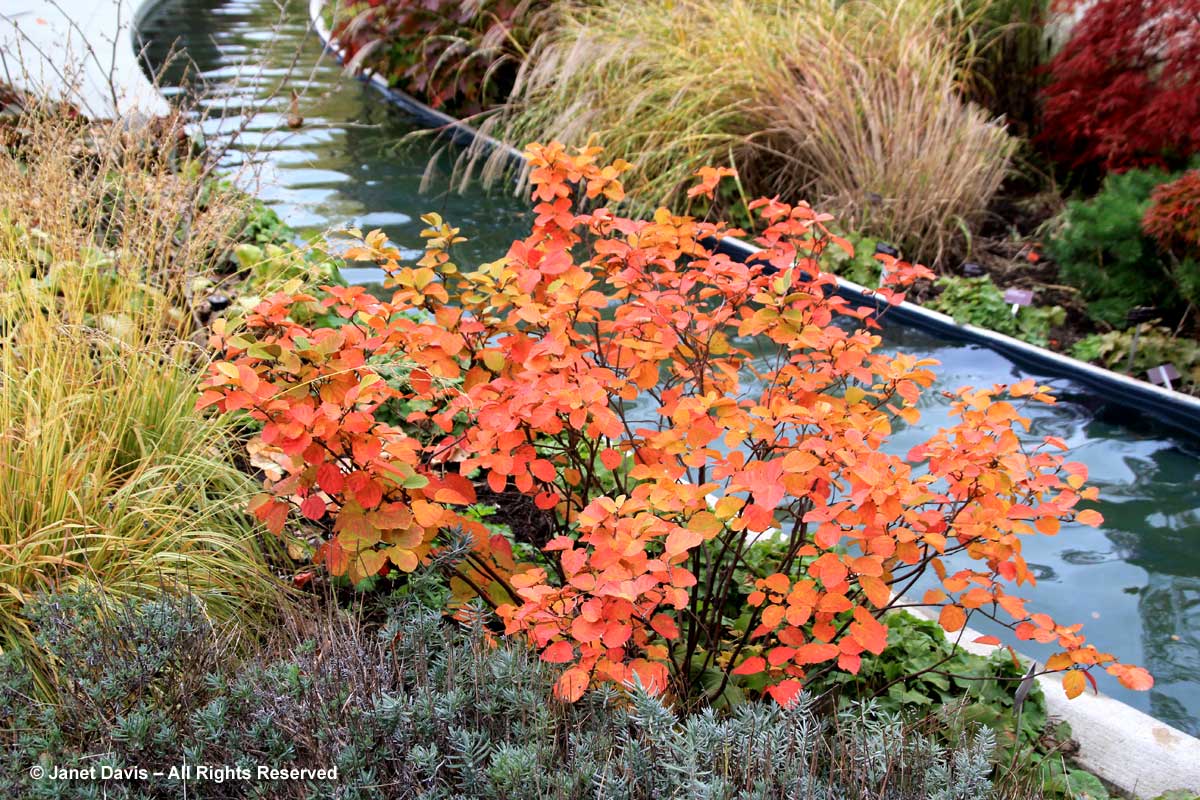
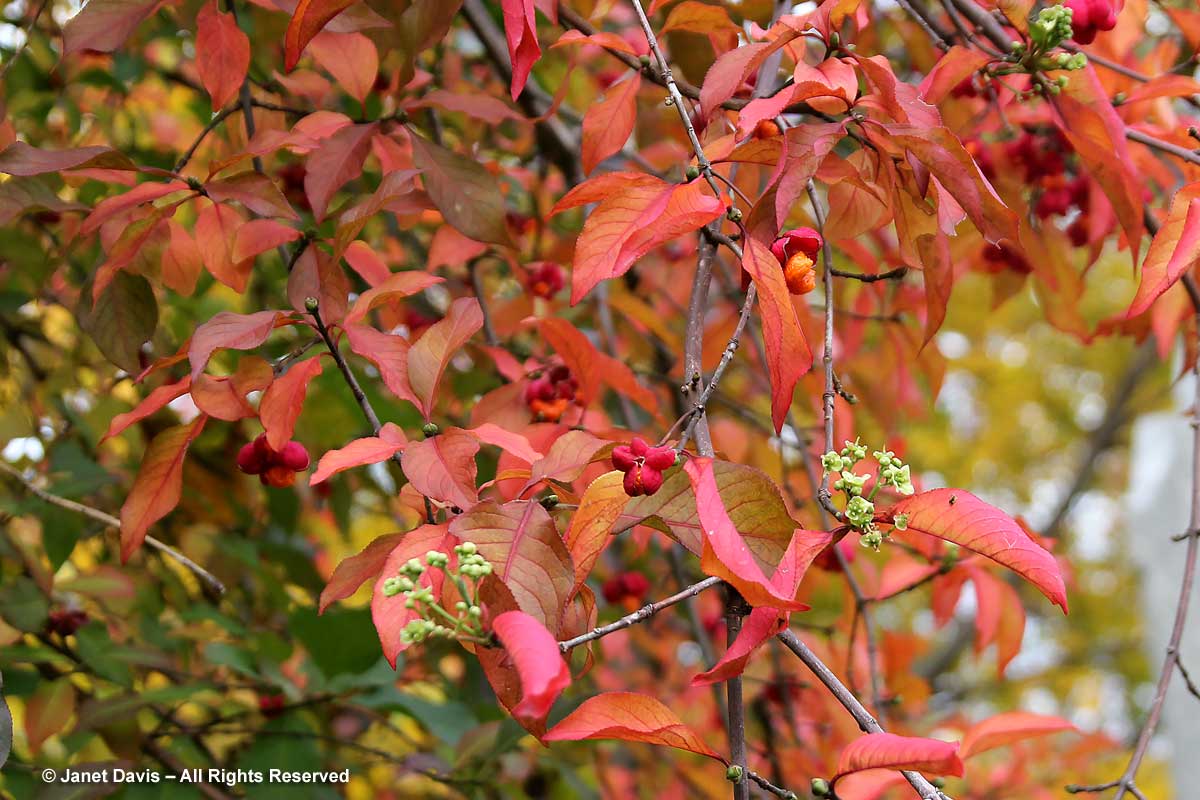


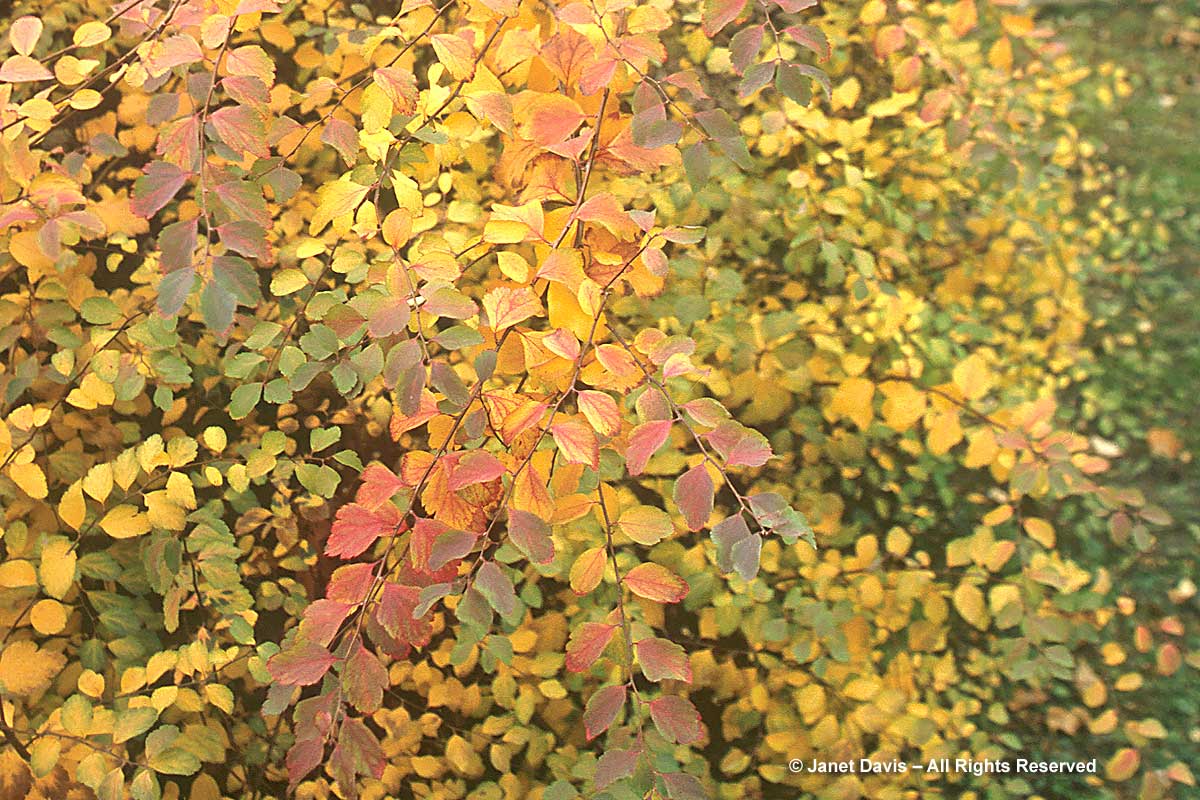

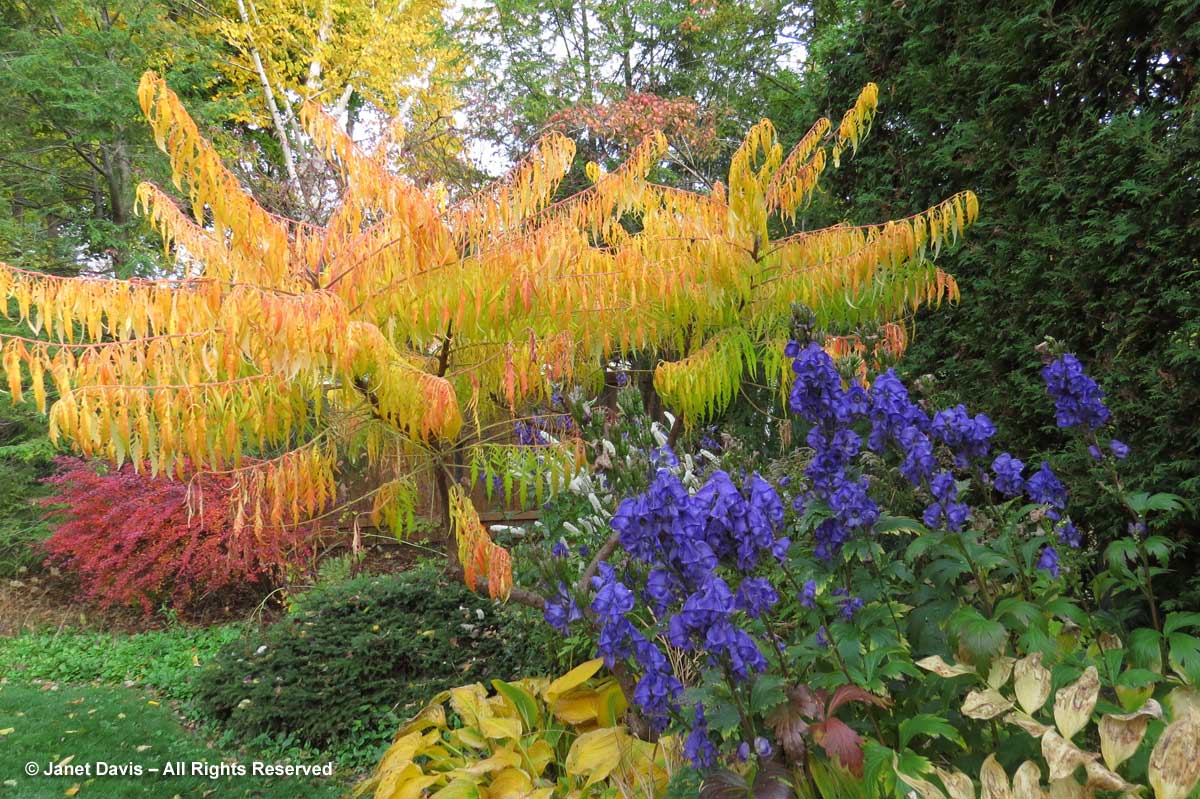

This post did my heart good, Janet.
Thank you so much, Aldona! I’m happy to have been your cardiac therapy.
Janet, thank you, this is a very in-depth post. Now I can put names to some of the gorgeous trees/shrubs I saw in Toronto
Thank you, Rasa. There will be one more on yellow-gold. I hope you enjoyed the fall colours as much as I have over the past few weeks. I see you went to Mount Cuba. It’s on my spring list for a trip one day. And if you’re planning another Toronto trip, do let me know long in advance and hopefully we can get together.
Yes, I did visit Mt.Cuba, and going back there come spring. They have a great collection of Baptisias, a genus, which I am very interested in, so I’ll be there when they are in flower.
As for Toronto visit, I’ll keep your offer in mind if I ever decide to visit again
Regards,
Rasa
Inspiring photos, as expected, and you always impress me with your plant knowledge, Janet.
Thank you, Helen. Too many years spent alone with plants. They don’t talk back! (And I love autumn.)
They don’t talk back! (And I love autumn.)